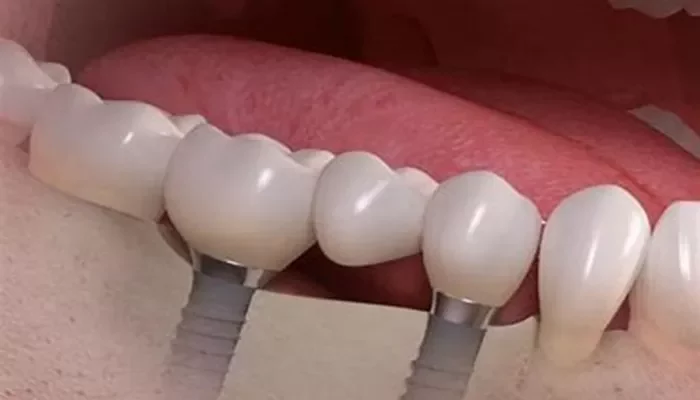Dental implants are a popular and effective method for replacing missing teeth. They provide a stable and long-lasting solution that can significantly improve a person’s oral health and smile. However, the success of dental implants largely depends on the healing process that occurs after the implant is placed in the jawbone. Understanding the healing process of dental implants is crucial for ensuring optimal outcomes and minimizing complications. This article aims to provide a comprehensive guide to the healing process of dental implants, including its stages, factors that affect it, and post-operative care.
Understanding the Healing Process of Dental Implants
The healing process of dental implants involves a series of biological events that occur after the implant is placed in the jawbone. This process is complex and can be divided into several stages, each with its own unique characteristics and duration. The ultimate goal of the healing process is to achieve osseointegration, which is the formation of a strong and stable bond between the implant and the surrounding bone tissue.
Stages of the Healing Process
Initial Healing and Inflammatory Response (0-2 Weeks)
Immediately after the implant is placed, the surrounding tissues will undergo an inflammatory response. This is a normal biological reaction that involves the recruitment of immune cells and the release of inflammatory mediators. The purpose of this response is to clean the wound and prepare it for healing. During this stage, patients may experience mild discomfort, swelling, and bleeding. It is important to follow post-operative instructions, such as taking pain medication, avoiding strenuous activities, and maintaining good oral hygiene.
Soft Tissue Healing and Primary Stability (2-6 Weeks)
As the inflammatory response subsides, the soft tissues around the implant begin to heal. This includes the gums and other surrounding tissues. During this stage, the implant will achieve primary stability, which is a temporary fixation that holds the implant in place until osseointegration occurs. Primary stability is crucial for preventing the implant from moving or becoming dislodged. Patients may continue to experience mild discomfort and swelling, but these symptoms should gradually improve. It is important to avoid putting too much pressure on the implant site during this stage, as this can disrupt the healing process.
Bone Healing and Osseointegration (6-18 Weeks)
The next stage of healing involves the formation of new bone tissue around the implant. This process is called osseointegration and is crucial for the long-term success of the implant. During this stage, the bone cells will attach to the surface of the implant and form a strong bond. This bond will provide the implant with the stability and support needed to function properly. Osseointegration can take several months to complete, and the rate of healing can vary depending on individual factors such as age, health, and smoking habits. During this stage, patients should avoid putting excessive force on the implant site and should continue to maintain good oral hygiene.
Maturation and Functional Loading (18 Weeks and Beyond)
Once osseointegration is complete, the implant will be ready for functional loading. This means that it can now support a dental restoration, such as a crown, bridge, or denture. However, it is important to allow the surrounding tissues to mature and adapt to the presence of the implant before placing any restoration. This maturation process can take several months and may involve gradual increases in functional load. During this stage, patients should continue to maintain good oral hygiene and avoid putting excessive force on the implant site. Regular dental check-ups are also important to monitor the progress of healing and ensure that the implant is functioning properly.
Factors That Affect Healing
Several factors can affect the healing process of dental implants. These include:
Patient Factors
Age: Younger patients tend to heal faster than older patients.
Health: Patients with underlying medical conditions such as diabetes, osteoporosis, or autoimmune diseases may experience delayed healing.
Smoking: Smoking is a major risk factor for implant failure and delayed healing. It impairs blood circulation and reduces the immune response, making it harder for the tissues to heal properly.
Medications: Certain medications, such as blood thinners and steroids, can also affect healing.
Implant Factors
Material: The material of the implant can affect healing. Titanium is the most commonly used material due to its biocompatibility and strength.
Design: The design of the implant can also impact healing. Implants with a roughened surface tend to osseointegrate faster than those with a smooth surface.
Placement: The accuracy and precision of implant placement can affect healing. Implants that are placed too close to vital structures such as nerves or sinuses may experience delayed healing or complications.
Surgical Technique
The surgical technique used to place the implant can also affect healing. Minimally invasive techniques tend to result in less trauma and faster healing than traditional techniques.
The use of advanced imaging technologies such as cone beam computed tomography (CBCT) can help ensure accurate placement and minimize complications.
Post-Operative Care
Proper post-operative care is crucial for ensuring the success of dental implants. This includes:
Pain Management: Taking pain medication as prescribed to manage discomfort.
Diet: Eating soft foods and avoiding chewing on the implant side during the healing process.
Oral Hygiene: Maintaining good oral hygiene by brushing and flossing regularly and using an antiseptic mouthwash.
Avoiding Strenuous Activities: Avoiding activities that may put excessive pressure on the implant site.
Regular Follow-Up Appointments: Attending regular dental check-ups to monitor the progress of healing and ensure that the implant is functioning properly.
Conclusion
The healing process of dental implants is a complex and multi-stage process that involves the formation of new bone tissue and the achievement of osseointegration. Understanding the stages of healing and the factors that can affect it is crucial for ensuring optimal outcomes and minimizing complications. Proper post-operative care is also essential for ensuring the success of dental implants. By following these guidelines, patients can increase their chances of achieving a successful and long-lasting implant-supported restoration.
Related topics:

